Volume V of the Word on Fire Bible is now available for purchase. I received an advance copy of the leather edition in return for a donation toward the production costs for volume V. This volume contains the books of 1 and 2 Chronicles, Ezra, Nehemiah, Tobit, Judith, Esther, and 1 and 2 Maccabees.
The design and layout of this volume is consistent with the others. Each book begins with an introduction written by a Catholic theologian, commentator, or scholar. Excerpts from Bishop Barron’s homilies, as well as quotes from other authors, are interspersed with the biblical text. Artwork relevant to the biblical text is also interspersed at appropriate places, along with explanations and interpretations of the art.
The biblical text is formatted in a single-column layout, which works very well for poetry. The photo below shows the single-column formatting of Tobit’s poem of thanksgiving to God on the right-hand page. The left-hand page, with a gray background, is an excerpted commentary on Tobit’s thanksgiving.
The cover design is meant to evoke the restoration of three key elements of Israel after their return from the Babylonian exile: the Law, the temple, and the walls of Jerusalem (depicted in the center of the illustration from top to bottom). On either side of this depiction, open gates with vertical bars symbolize the return to freedom in the land which God promised. Interestingly, the doorway in the wall of Jerusalem (depicted at bottom-center of the illustration) lacks a keystone at the top of its arch, suggesting that the return from exile was not the climax of God’s relationship with Israel. The true keystone — Christ — was yet to come.
As expected, this volume uses the original text of the NRSV-CE, just like all previous volumes of the Word on Fire Bible. I have been communicating with Friendship Press regarding their phase-out of the original NRSV-CE, and I’ll be publishing a post with further information on that in a few days. In the meantime, it’s worth noting that the recent announcement from Logos Bible Software regarding a license expiration on May 31st for sales of the NRSV-CE does not apply to the Word on Fire Bible.
Finally, I noticed that the grain of the leather differs somewhat between the various volumes that have been printed so far. Here is a photo of volumes IV and V which shows a difference. This is to be expected for genuine leather (as opposed to imitation leather, which can be manufactured with consistent texture and appearance).
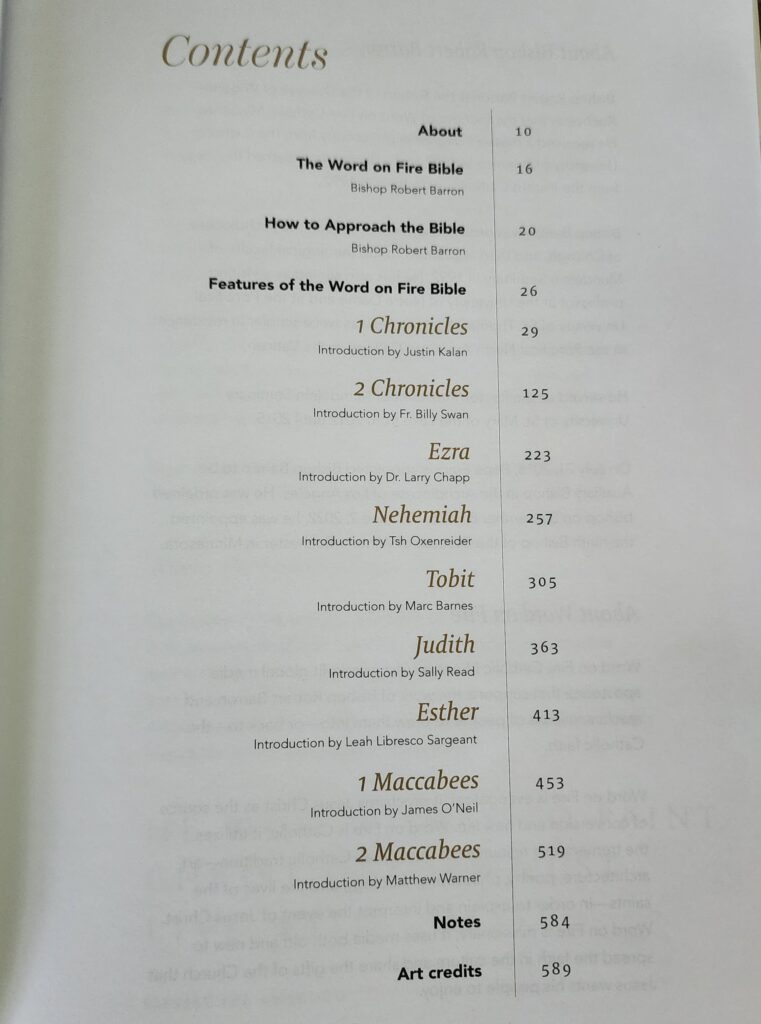
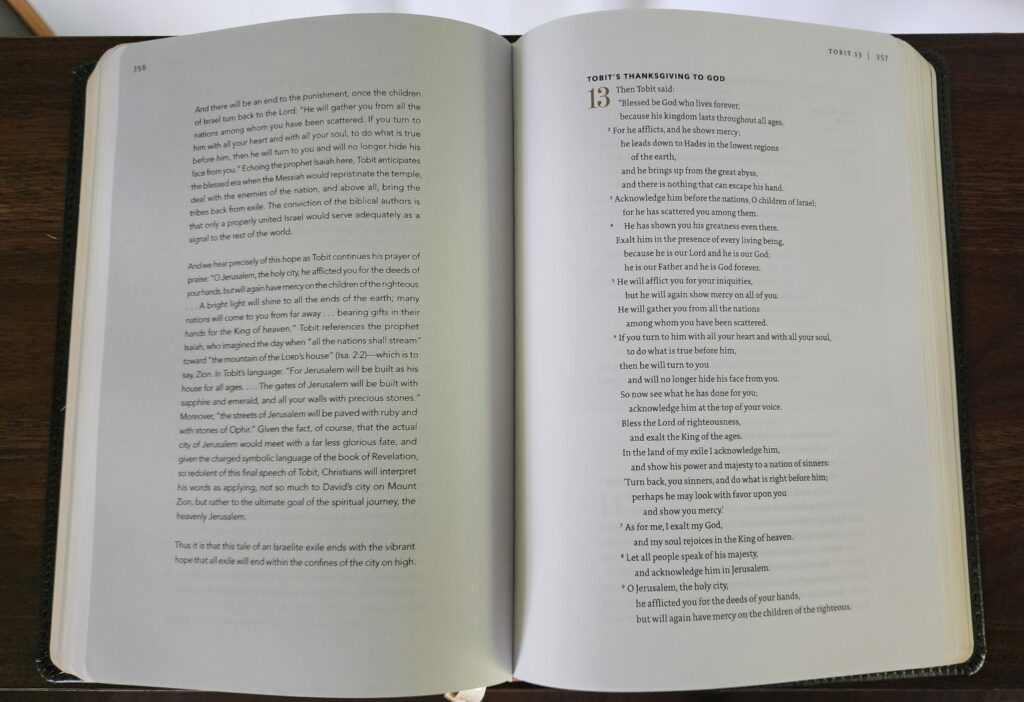
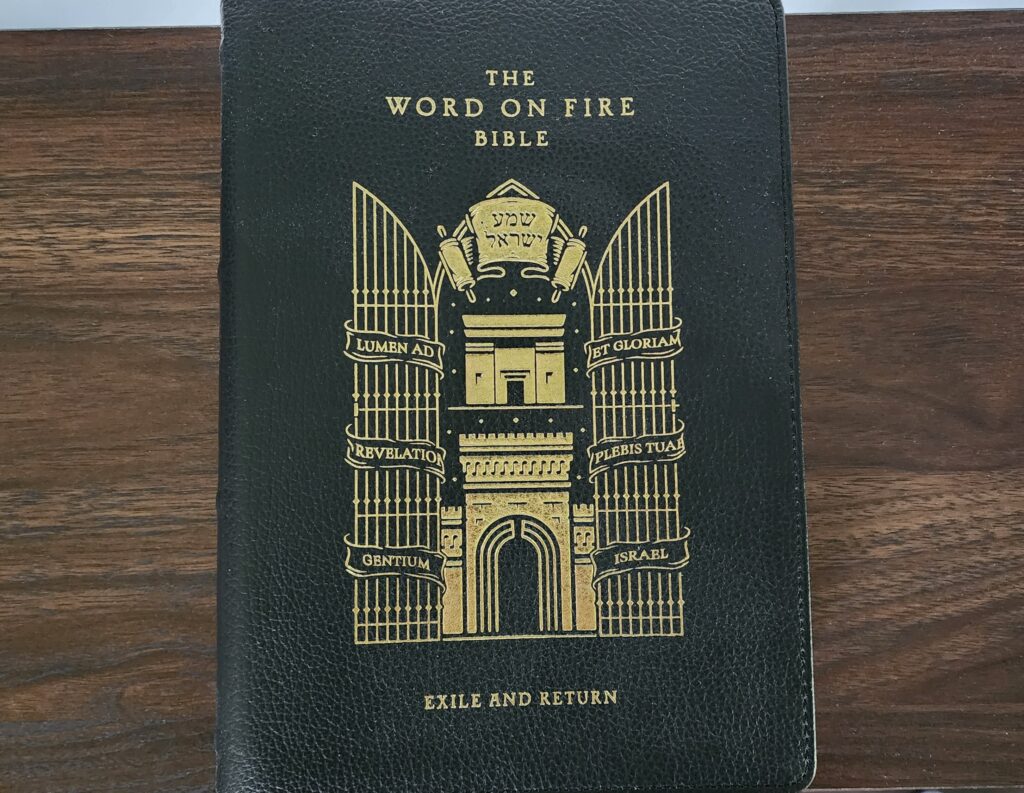
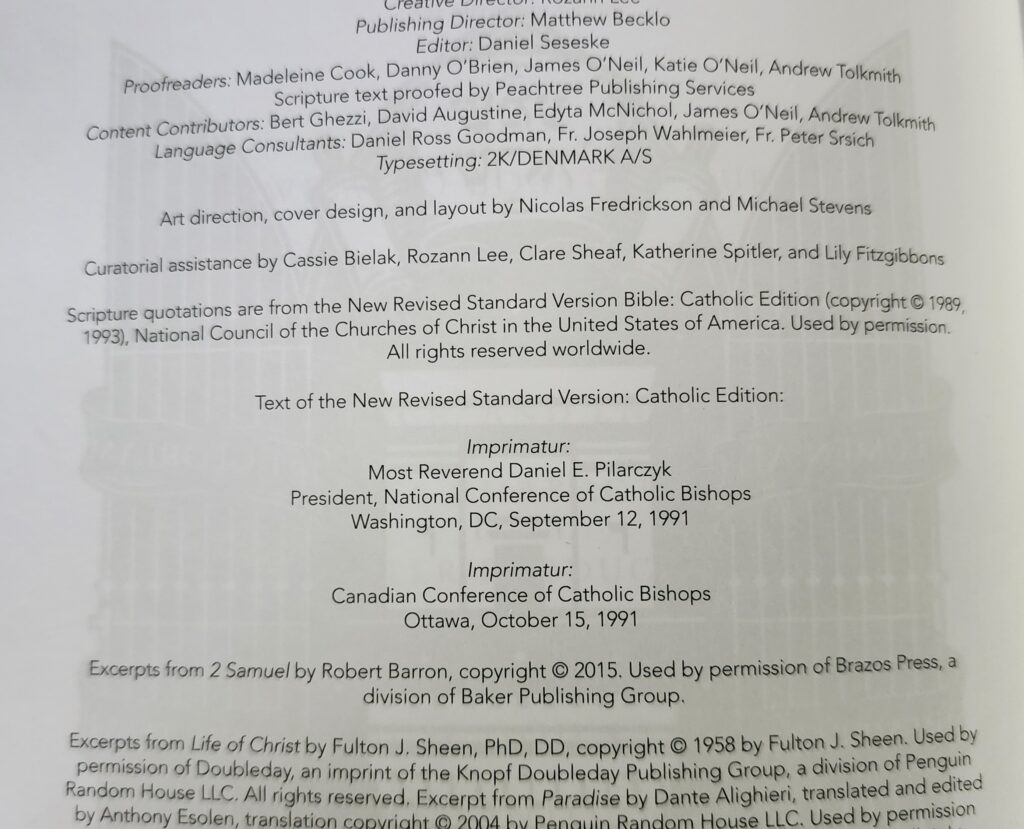
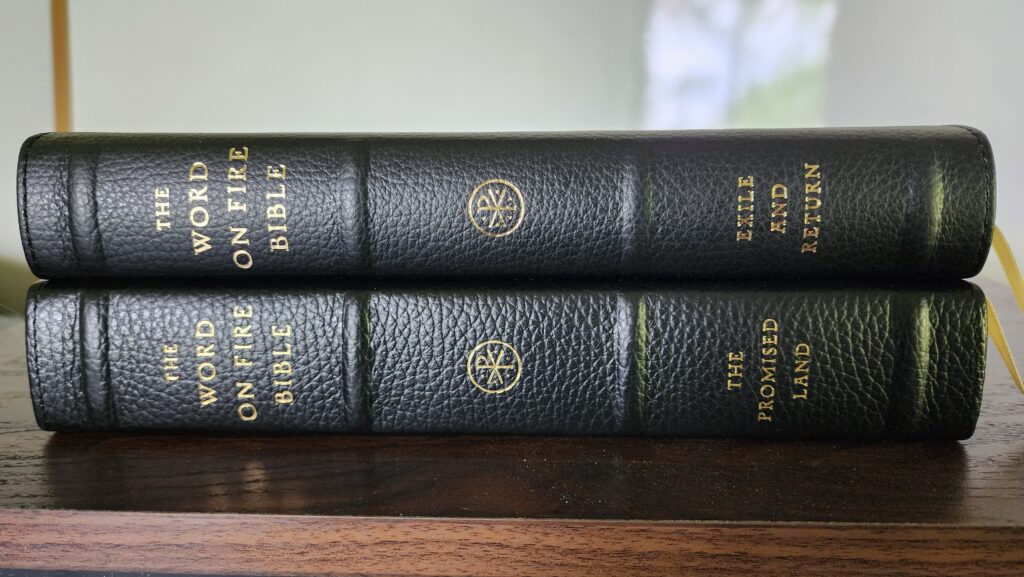
How much does each volume of the Word on Fire Bible stand alone? Like, do ideas cross the whole series which you have to have all 7 to bring to conclusion, or do the books therein stand as seperate entries and works in the 7 volume anthology?
In regards to the NRSVue CE, when should we expected that article does it only contain things from friendship press, aka no word on the imprematur and or revision to the NRSVue for its catholic edition?
Nice! My copy shipped just the other day and should be arriving next week. I am very interested in seeing the deuteros treated in the WOF Bible.
I’m glad to see this project make it this far. I was worried that these last two volumes wouldn’t sell well but I’m happy to see them produced and I will be completing my set with this volume
I thought the complete set is going to be 7 volumes?
It will be 7 volumes.
Yes it will. I meant complete my set of those available
Kind of a shame for such a quality printing of the bible to include intros written by… bloggers?
So it is likely the NRSVCE will become the NRSVCEUE?
Yes, that is the goal.
might be interesting to see the sales figures for the NRSVUE. Are they people ‘buying it’ or ignoring it?
It could be a decade or longer for the NRSVU to get an imprimatur, assuming it ever happens. I don’t know what the problem is with bishops in the Anglosphere. Recently, he only way publishers have been able to obtain an imprimatur recently is by approaching bishops in India or other parts of the Third World. The ESV CE, the NLT CE, The Message CE, and the NCB all had to go to India to get an imprimatur because, for whatever reason, American and British bishops simply ignored or were unable to respond to the request from the publisher.
Is there any evidence to back up the statement that “American and British bishops simply ignored or were unable to respond to the request from the publisher”? I can think of other conclusions to jump to if there is no evidence.
In the case of the ESV-CE, the forward lists the scholars who reviewed/edited the ESV to turn it into the the ESV-CE. Guess what? They’re all Indian or located in India. And the original licensing from Crossway was done by the Asian Trading Corporation (an Indian company). So for the ESV-CE I’ll conclude that an imprimatur from Indian bishops is the most appropriate, and assume that they submitted there first.
Another possible explanation: we all have our favorite verses that we use to back up claims that each of the Catholic bibles isn’t really Catholic enough. So perhaps in some cases American/British bishops did review but said “no”. To be clear, I have no evidence that this happened.
The evidence is the fact that it has been years since a Bible got an imprimatur from an American or British bishop. Why would American publishers, publishing a Bible for American readers, go to India to get an imprimatur if they could easily get one locally?
Well for starters the publishers do not get imprimaturs. Imprimaturs are granted for translations. Once a translation has an imprimatur then any publisher printing that translation uses the same imprimatur.
I don’t know what the state of the issue is—maybe some of you do—but I would think the NRSVue faces greater hurdles than did the ESV or the NLT for approval of a Catholic Edition. There was controversy around the NRSVue’s translation of New Testament passages regarding same-sex acts that seemed to go quite beyond the inclusive language controversies of 35 years ago.
Honestly, I think the translation of Mark 1.1, Genesis 1.1 and other clear departures from the Latin Type is more of an issue here, as the NRSV-CE was let through before Liturgicam Authenticum,
We must remember that the “governance” of Liturgicam Authenticum is restricted to, the use of a translation in the lectionary. It is not part of the process of granting an Imprimatur. Some definitions: Imprimatur = doctrinal soundness, but not liturgical authorization.
Liturgical use = requires specific Vatican recognitio or local bishops’ conference approval.
In the case of Canada’s use of the NRSV-CE the Canadian Bishops initially created a Lectionary using the -CE without Vatican Approval (In that time the Conference of Bishops had no authority to create a Lectionary). After the fact, the NRSV-CE in Canada was approved by the Vatican with some changes to the gender-neutral language of the CE.
Thus, using the NRSV-CE in the Word of Fire edition is perfectly acceptable. In the future, if a NRSV-CEue was published could Bishop Barron grant an Imprimatur? The answer is Yes.
I agree on the distinction between the imprimatur and Liturgiam Authenticam. The USCCB could grant an imprimatur for the NRSVue regardless of whether it satisfies the provisions for liturgical translations in Liturgiam Authenticam (in fact, the NRSVue almost certainly doesn’t satisfy those provisions due to inclusive language, just like the original NRSV).
Bishop Barron would not be permitted to grant an imprimatur for a scriptural translation on his own. Canon 825 says that vernacular translations of Scripture must be approved by either the Apostolic See or the bishops’ conference (this Canon relates to the mere publication of translations, not liturgical use):
“Books of the sacred scriptures cannot be published unless the Apostolic See or the conference of bishops has approved them. For the publication of their translations into the vernacular, it is also required that they be approved by the same authority and provided with necessary and sufficient annotations.” (Canon 825, section 1)
Under the previous Code of Canon Law, individual bishops were allowed to grant an imprimatur to Scripture translations, but that authority is now reserved to the bishops’ conference.
Finally, just a note on the Canadian lectionary: It is not clear to me that the Canadian bishops intended to defy Rome or to publish their lectionary without permission. The Congregation for Divine Worship (CDW) originally approved the NRSV for liturgical use in 1992, and the bishops produced their lectionary following that approval. At the time, the Canadian bishops did not believe further approval was required for a lectionary based on the NRSV. The Congregation for the Doctrine of the Faith (CDF) became increasingly concerned about inclusive language in liturgical translations and required that the original approval for the NRSV be rescinded in 1994. At that point, a lectionary using the NRSV was already published in Canada, and the Canadian bishops received approval to continue using it on an interim basis.
The following article from the Adoremus bulletin reports several of these points:
https://adoremus.org/2007/12/confusion-about-scripture-translations-for-liturgical-use-a-status-report-trendy-texts-cause-confusion-can-consultations-resolve-controversy/
This article from Catholic News Agency also contains a basic summary of the events surrounding the Canadian lectionary:
https://www.catholicnewsagency.com/news/10325/canadian-lectionarys-inclusive-language-receives-vatican-approval